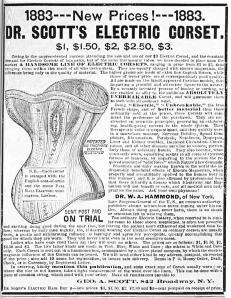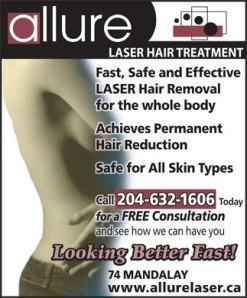This essay first appeared in Cliterati on November 24th; I have modified it slightly for time references and to fit the format of this blog.
 Advertisers are sneaky, unscrupulous creatures, and though their techniques have improved dramatically since the days when hucksters hawked snake oil, wonder soaps and electric corsets their adherence to factuality has not. In fact, it’s not at all unusual these days to see adverts posing as news items: companies like Ashley Madison have grown very adept at disguising their advertising copy as “press releases”, then feeding it to lazy “journalists” with a taste for the tawdry, while other, less skillful advertisers with less-sexy products must rely on lower-profile outlets for their fake “articles”. But in either case, the result is the same: the unwary are fooled into accepting biased, less-than-entirely-truthful solicitation as basically-objective reporting. Here’s an example which was brought to my attention in November:
Advertisers are sneaky, unscrupulous creatures, and though their techniques have improved dramatically since the days when hucksters hawked snake oil, wonder soaps and electric corsets their adherence to factuality has not. In fact, it’s not at all unusual these days to see adverts posing as news items: companies like Ashley Madison have grown very adept at disguising their advertising copy as “press releases”, then feeding it to lazy “journalists” with a taste for the tawdry, while other, less skillful advertisers with less-sexy products must rely on lower-profile outlets for their fake “articles”. But in either case, the result is the same: the unwary are fooled into accepting biased, less-than-entirely-truthful solicitation as basically-objective reporting. Here’s an example which was brought to my attention in November:
…a revolutionary energy-assisted device…promises to not only improve the appearance of ‘down there’ but also give the sex drive a makeover too- all for £1,000. Many women who suffer from skin laxity around and on their labia…complain about reduced sexual satisfaction and low self-confidence. Until now they have only had a choice of removing the unwanted skin by a surgical procedure- labiaplasty…[which] is usually expensive (£2,000-£4,000) and the healing can take over three weeks. The procedure can also be painful and has been associated with the risks typical of all invasive procedures, such as scarring and bleeding…The Protégé Intima is a new system designed to address labia remodelling without surgery…80% [of women] reported “significant to excellent” improvement in the appearance of their labia, while 60% reported “significant to excellent” improvement of sexual satisfaction- with 100% reporting some form of sexual satisfaction improvement…
There’s a great deal to unpack here, but before we begin I think I should clarify my own views on plastic surgery. First of all, I am a firm believer in the principle of self-ownership: I believe that every person is the sole and complete owner of his or her own body and life, and that absolutely nobody else has any claim upon it. Nobody has the right to say what an individual can do with or put into her body, and if someone wants to build up, slim down, pierce, tattoo, scarify, modify, mutilate or even destroy her body that is nobody’s business but her own. The impulse to tell women what they can or cannot do with their bodies, whether it’s done in the name of “morality” or “feminism” or anything else, is based in exactly the same twisted control-freakishness which drives censorship, the ruinous War on Drugs, and every crusade against other people’s sexual behavior. Second, I myself have had three plastic surgeries: liposuction in December of 2004, breast augmentation in January of 2000 and labioplasty in November of that year. I have written at length about my reason for getting a boob job, and my reason for the other two surgeries was the basically the same: I was unhappy with my appearance, had tried various non-surgical means of altering it (without success), and felt that I would make more money as an escort with the change than without it.
Now, we can argue until doomsday about why I felt the modifications were necessary, but in the end it doesn’t actually matter. Whether you think beauty standards are “good” or “bad” is wholly immaterial; it may not be “fair” or “feminist” or whatever that bigger tits and a smaller belly are generally viewed as more attractive than the alternatives, but they are, and if a woman is unhappy with her appearance it is her right to change it as she sees fit. Now, none of the surgeries I had were minor twiddles: my bosom was of pre-adolescent flatness, my abdomen had ballooned in a short time due to a formula-change in my hormone replacement (I had a hysterectomy at 28), and my labia and clitoral hood were so large they literally got in the way. But even if the changes I wanted had been fairly small, it would still have been my right to have them as long as I was willing to spend the money and endure the pain and other side effects.
That, however, is the rub. For the wealthy, the cost of plastic surgery is a non-issue, and a sex worker might consider cosmetic alterations a business expense. But for the average person cost is a significant hurdle, and the negative effects of surgery force her to seriously consider how much she really wants the procedure in question. In other words, the money, pain and danger tend to dissuade most non-celebrities from undertaking surgical modifications unless they perceive the need to be real and serious, as I did. And that, unfortunately, opens a wide gap into which advertisers can move to take advantage of people’s insecurities. If they can claim their alternative to cosmetic surgery is cheaper, and easier, and quicker, and less painful, and more convenient, and has some other bonus advantage, they’re going to bring in a lot of people whose dissatisfaction with whatever-it-is isn’t serious enough for them to go through the trouble and expense of surgery. Take a look at that article again; you’ll find it makes every single one of the claims I mentioned, even exaggerating the danger of surgery (bleeding in the genital area is called a “risk”, because obviously that never happens to women). The claim of improved “sexual satisfaction” seems especially questionable; while feeling more attractive and less self-conscious can certainly make sex more pleasant, there is also talk of “increased blood flow in the treated area”, which frankly sounds to me like text borrowed from a Viagra advert; blood flow has little or nothing to do with female sexual response.
 Of course, none of that would be all that important if the treatment really does what it’s claimed to do; sure, it capitalizes on women’s insecurities about their appearance, but so does every beauty parlor, makeup manufacturer and hair-removal business. If it really, truly can produce permanent cosmetic effects for a fraction of the cost and with less risk than surgery, there’s absolutely nothing wrong with it; however, I suspect this is not the case. “Revolutionary” is a euphemism for “largely unproven”, and my epilator is “energy-assisted” too (as is an electric toothbrush). The text is distressingly vague about what the device actually does; a laser is mentioned in reference to other devices, but since we are told that the Intima “combines focused high frequency technology with built-in safety features to…prevent burns”, it seems likely that it is also laser-based. That immediately calls to mind laser hair removal, which has won customers away from electrolysis with “quick and easy” advertising copy despite the fact that it is both much more expensive and far less permanent than electrolysis. One has to wonder if the “skin-tightening” effects promised here are equally impermanent. And while I doubt that these machines will be inexpensive enough to be purchased by the kind of dangerous incompetents who have gone around killing people by injecting filth into their bums over the past few years, they may very well be available to the glorified beauty parlors that do laser hair removal. If that’s the case, they may simply become one more way for unscrupulous businesspeople to separate fools from their money via the same sort of manipulative advertising that created the need for floral douche and “feminine deodorant”.
Of course, none of that would be all that important if the treatment really does what it’s claimed to do; sure, it capitalizes on women’s insecurities about their appearance, but so does every beauty parlor, makeup manufacturer and hair-removal business. If it really, truly can produce permanent cosmetic effects for a fraction of the cost and with less risk than surgery, there’s absolutely nothing wrong with it; however, I suspect this is not the case. “Revolutionary” is a euphemism for “largely unproven”, and my epilator is “energy-assisted” too (as is an electric toothbrush). The text is distressingly vague about what the device actually does; a laser is mentioned in reference to other devices, but since we are told that the Intima “combines focused high frequency technology with built-in safety features to…prevent burns”, it seems likely that it is also laser-based. That immediately calls to mind laser hair removal, which has won customers away from electrolysis with “quick and easy” advertising copy despite the fact that it is both much more expensive and far less permanent than electrolysis. One has to wonder if the “skin-tightening” effects promised here are equally impermanent. And while I doubt that these machines will be inexpensive enough to be purchased by the kind of dangerous incompetents who have gone around killing people by injecting filth into their bums over the past few years, they may very well be available to the glorified beauty parlors that do laser hair removal. If that’s the case, they may simply become one more way for unscrupulous businesspeople to separate fools from their money via the same sort of manipulative advertising that created the need for floral douche and “feminine deodorant”.
